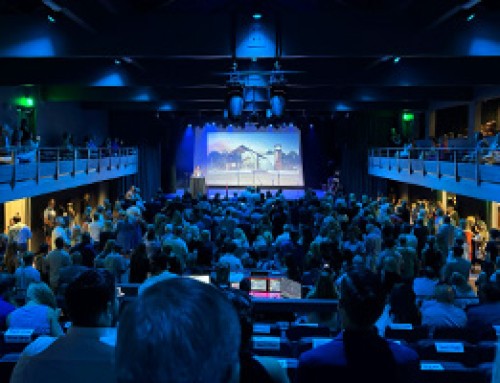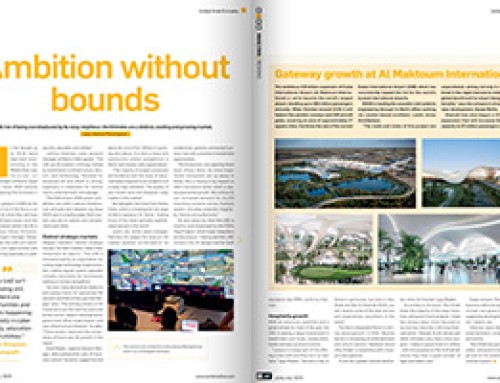by Laurel Gross
If in the ancient world all roads led to Rome, then for about 35 years of the 20th Century for those seeking a unique cultural experience all roads led to Art D’Lugoff’s The Village Gate. The legendary club at the corner of Bleecker and Thompson Streets in Greenwich Village was a powerful magnet for those wanting to sample the music of the day as well as sounds ahead of the times. From 1958 to 1993 they came to drink up the atmosphere and the artistic scene and, well…just drink, meet up, have fun.
One of the programming highlights of that golden era was “Salsa Meets Jazz”, a Monday night staple that will be revived in a show featuring Poncho Sanchez at a new venue on the same site as a tribute to D’Lugoff’s genius and his Gate as part of this month’s JVC Jazz Festival. Other JVC shows featuring Charlie Haden’s Quartet West, Bill Frisell’s trio, the Swedish group E.S.T. with New York’s Aetherial Bace and Soul Live with Joshua Redman will be held at the new nightspot, called Le Poisson Rouge.
The famed “Salsa” series will become a regular part of Le Poisson Rouge’s eclectic and ambitious programming roster after the new performance space/art gallery/lounge – the brainchild of classical composer and violinist David Handler and cellist Justin Kantor – officially opens this September. D’Lugoff, now in his 80s, is back on the downtown scene as a consultant to the new venue and will present his “Salsa Meets Jazz” as well as other events. Grammy-nominated drummer and bandleader Bobby Sanabria, who was in the series and also came down to hear guys like Art Blakey and the Jazz Messengers, recalls those times fondly. “At one point it became so big it was the place to be on Monday nights and you would see anybody and everybody there,” including an endless stream of celebrities. “Anyone who was part of the Bohemian arts music scene eventually was down there. When Arturo Sandoval defected from Cuba the first gig he did he requested the Tito Puente Orchestra, the Mario Bauza AfroCuban Jazz Orchestra which I played in and Dizzy Gillespie as the guest soloist.”
The fabled series featured the marriage of Latin music artists like Celia Cruz, Eddie Palmieri, Paquito D’Rivera, Mongo Santamaria, Ray Barretto and many others with top jazz soloists such as Dizzy and Dexter Gordon. Louis Armstrong, Miles Davis, John Coltrane, Count Basie, Coleman Hawkins, Charles Mingus and McCoy Tyner were on the long list of phenomenal jazz stars who trekked down to the Gate to play. Countless live jazz and Latin albums featuring the greats were birthed there, including Monk’s Live At The Village Gate (1963) and Sonny Rollins’ Our Man In Jazz (1962).
Le Poisson Rouge founders/owners Handler and Kantor, young entrepreneurs with minds of their own, joined by a group of private investors, aim to capture the bohemian spirit and enchantment of the original Village Gate, albeit in their own way. While classical music students at Manhattan School of Music, they developed a vision of their own performance venue as something completely distinct from what’s already out there on the club scene and in more formal venues like concert halls, incorporating various arts, including classical music and jazz.
That vision is original and idiosyncratic. Handler, 27, refrains from using the word “club” at all to describe the venue. And while there isn’t a specific story to the choice of name, he and Kantor liked Le Poisson Rouge (in French, “The Red Fish), he says, because they feel it conjures up images of the atmospheric Bohemian gathering places in ’20s Paris. There’s an unnecessary separation in the arts today, he feels. For instance, there’s “arts in the conservatories, concert halls and museums and, in an entirely separate space and time, socializing and nightlife and that energy. And I feel that both are dependent on one another and suffering without one another. So we will be a multimedia art cabaret dedicated to the fusion of popular and art cultures in the realm of music, film, theater, dance and fine art. “Much as there is a need on the part of classical music or jazz or a lot of the arts in general to expand their audienceship I think that, conversely, there is a want on the part of the public to expand their palette and be more familiar with different genres and mediums of art. I think that especially the younger demographic is not being given credit enough for that kind of curiosity. And that’s what we’re really hoping to tap into with this space.
The setup inside will be as flexible and versatile as its programming options. A main space will accommodate shows that are fully seated, standing, a mixture of both and also performances “in the round”. (Handler says the JVC shows will be arranged to hold about 200 seated and about 750 standing or a mixture of both options.) John Storyk is masterminding the finely tuned acoustics. Two music directors are handling the bookings: Ronen Givony (classical, indie rock) and Brice Rosenbloom (jazz, international music,
singer-songwriter genre), though Handler says that their areas of specialization can overlap.
The D’Lugoff-helmed “Salsa Meets Jazz” will be a continuing tribute to the legendary history and status of his Village Gate and there may also be a tribute area to the Gate on the premises. It’s a lasting heritage. No doubt the last word and “first word” of this new beginning should belong to D’Lugoff himself, a ceaselessly inventive, imaginative, devoted and tireless entrepreneur and impresario of the arts, whose great invention and vision still reigns in the hearts and minds of many. He may be the generator of great cultural history, but he is also a man of today and is busy seeking new avenues of expression now and into the future. Just a couple of his other projects: a national museum of folk history hopefully to be
situated in the Village and a revival of dancing in clubs. And then, possibly, he’s considering doing a live revue to be done maybe at Cornelia Street Café containing his insights of the city’s still evolving cabaret and music scene.
As for that folk museum, “That would be a real plus for Greenwich Village, for bringing back the old Village, with more music and more culture.” For D’Lugoff, yesterday was great, but why stop there?








